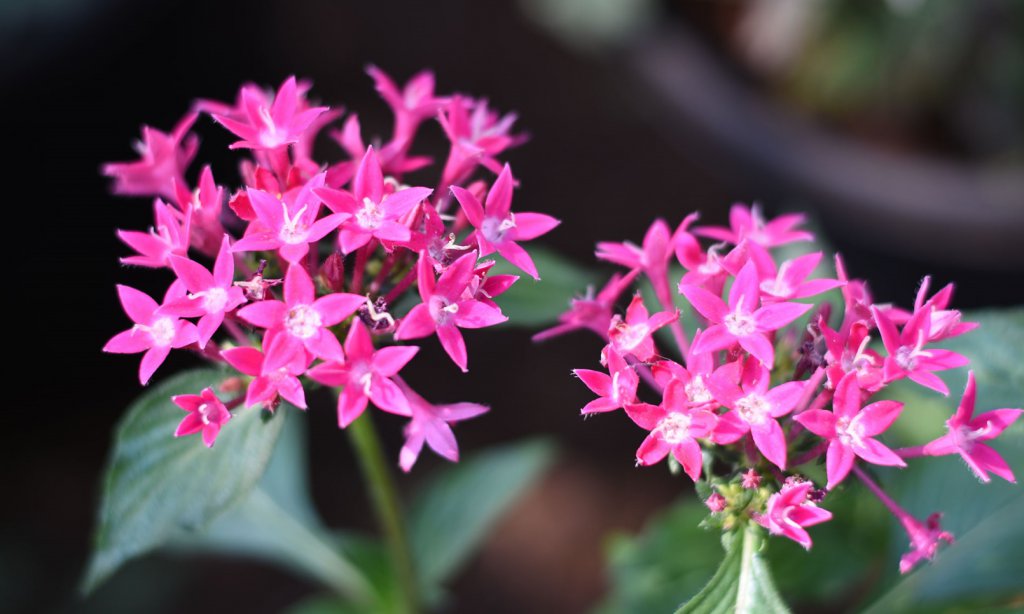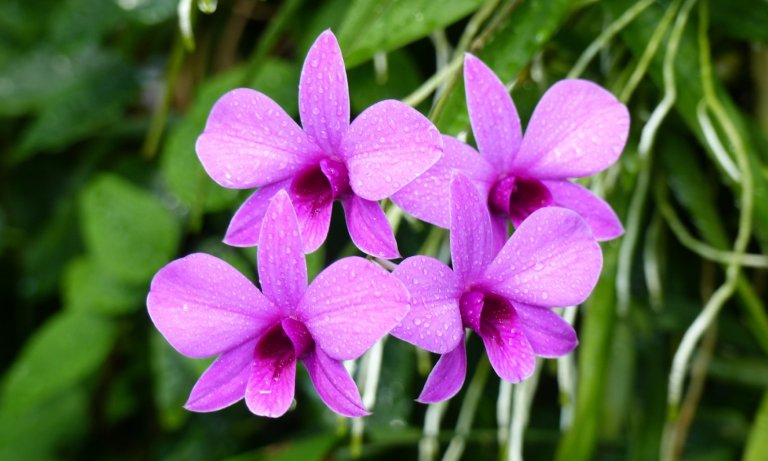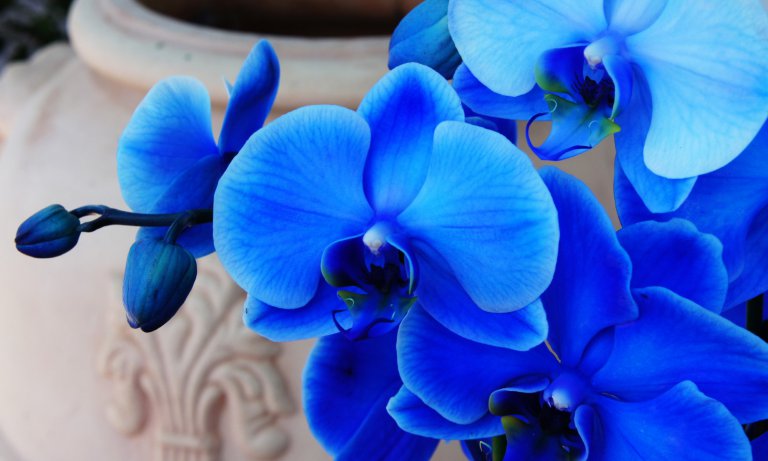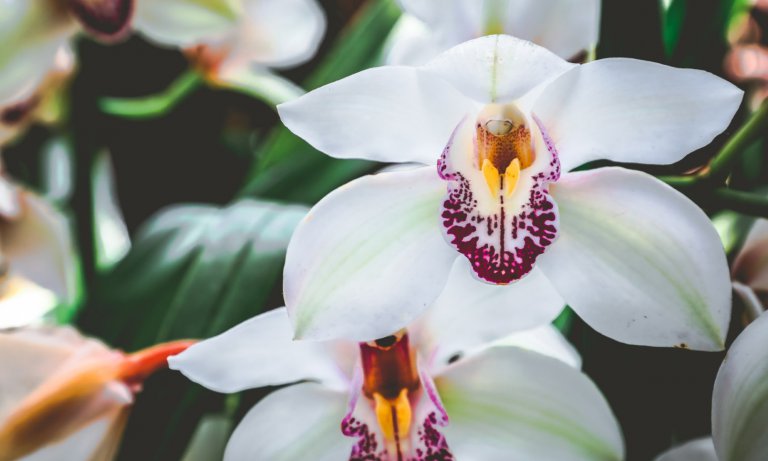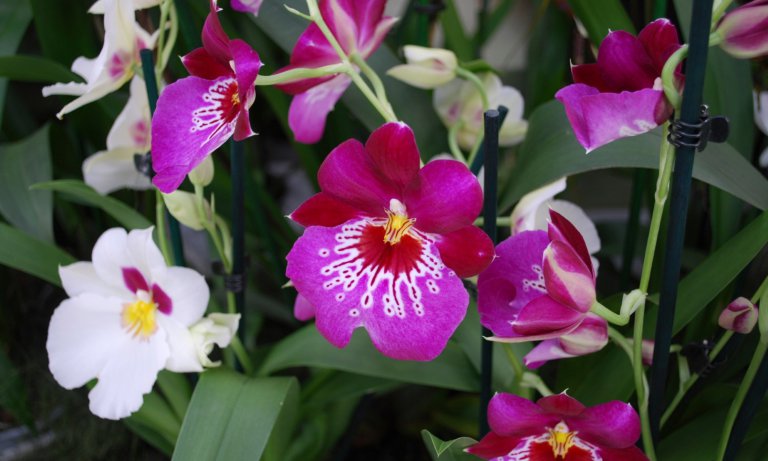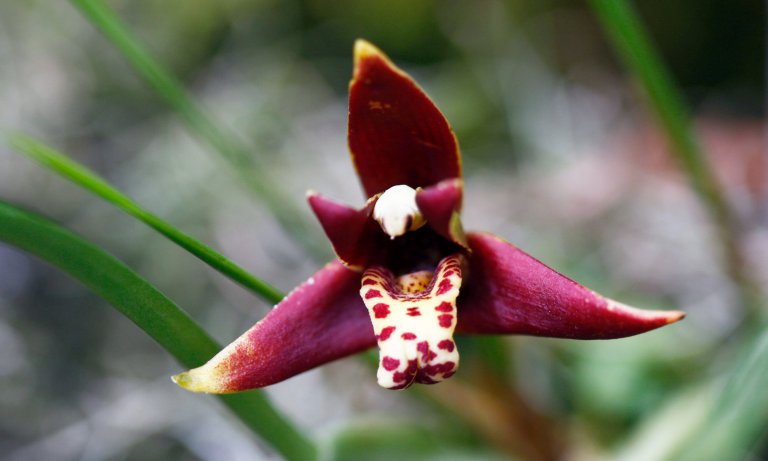The Epidendrum genus of orchids is very diverse and counts over 1500 species. Many people have actually been growing these orchids in their gardens without even realizing it.
Due to the large number of species, these orchids come in a variety of shapes and sizes, from miniature to large plants. They often grow in clumps of reed-like stems, and they yield many plants from one stem.
Epidendrum orchids are known for producing vibrant colored flowers that will brighten your house and improve your mood. They bloom several times throughout the year and are easy to grow and very forgiving plants, making them a great candidate tor beginners.
Let’s start by looking at their natural environment, so we can understand what conditions they require.
Natural Habitat
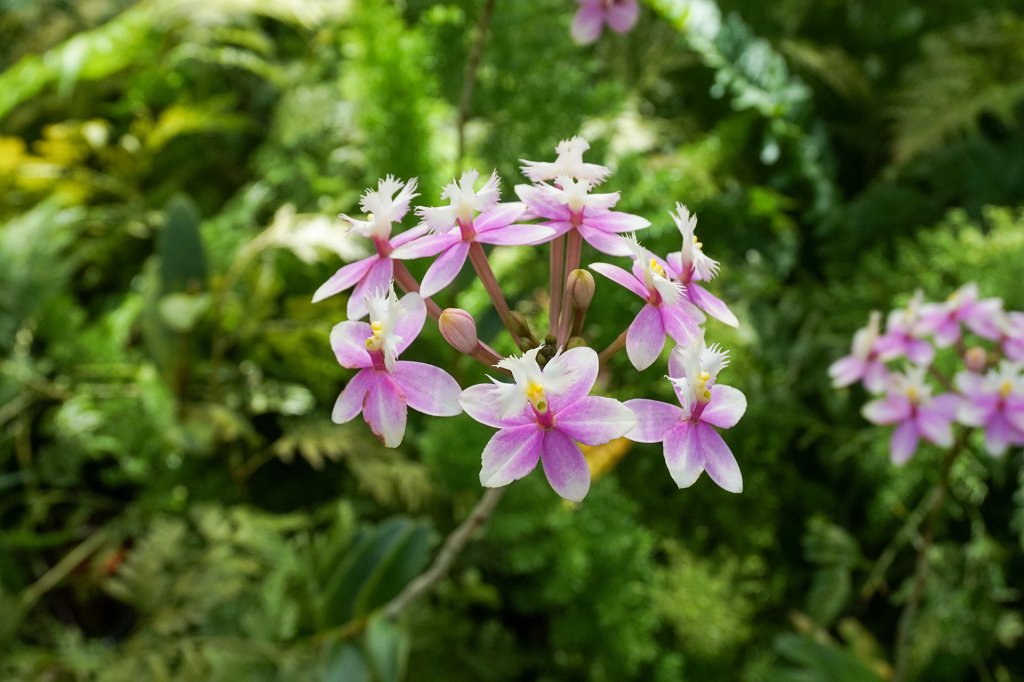
Epidendrums are native to the subtropical and tropical areas of the American continents. They are accustomed to various altitudes, from sea level to circa 3000m in the Andes.
Many species of this genus are epiphytic plants, like the majority of orchids. However, there are some terrestrial species, such as Epidendrum Fulgens. Some remarkable species, like Epidendrum Calanthum, are lithophytic plants, which means that they grow on rocks.
Although these plants are adapted to a variety of conditions, you should know the natural habitat if your particular species, so that you can provide the proper care.
How to Care for an Epidendrum Orchid
Here are the different aspects you’ll need to consider when caring for your plant.
Light
Sunshine and bright light throughout the year is the most essential condition for Epidendrum orchids. The light requirements are generally similar to that of Cattleya orchids.
These plants tend to elongate, have dark leaves, and not bloom if they lack light. Therefore, if you notice any of these signs, it is time to move your orchid to a brighter place. The leaves of reed-stem Epidendrum orchids tend to get a slight red tint when they are happy with the lighting.
The species that grow in higher altitudes prefer more shade. Always remember to check the natural habitat of your specific orchid and adjust the lighting accordingly.
If you chose to leave your plant outside during the warmer months, be mindful that direct sun exposure may burn the leaves. Therefore, an east or west-facing balcony is appropriate, as it will protect the plant from sunburns.
Temperature
Most Epidendrum orchids grow well in cool or intermediate to warm temperatures. Most species will thrive if kept between 60F and 90F during the day and a few degrees lower during the night. They are, however, quite forgiving and can tolerate a wide range of temperatures.
As a rule of thumb, you should not keep your orchid below 50F for extended periods. You should, however, be mindful of the particular species requirements as these can vary a lot.
Epidendrum Conopseum, for example, can even tolerate freezing conditions. Meanwhile, Epidendrum Cinnabarinum and many of its primary hybrids prefer warmer temperatures. Epidendrum Radicans, which is a commonly cultivated species, grows well in cool conditions.
Humidity
Epidendrum orchids enjoy moderate humidity levels, between 50% and 80% throughout the year. If the humidity is too low, you can use humidity trays or spray the orchid with a mist, especially during the summer months.
Watering
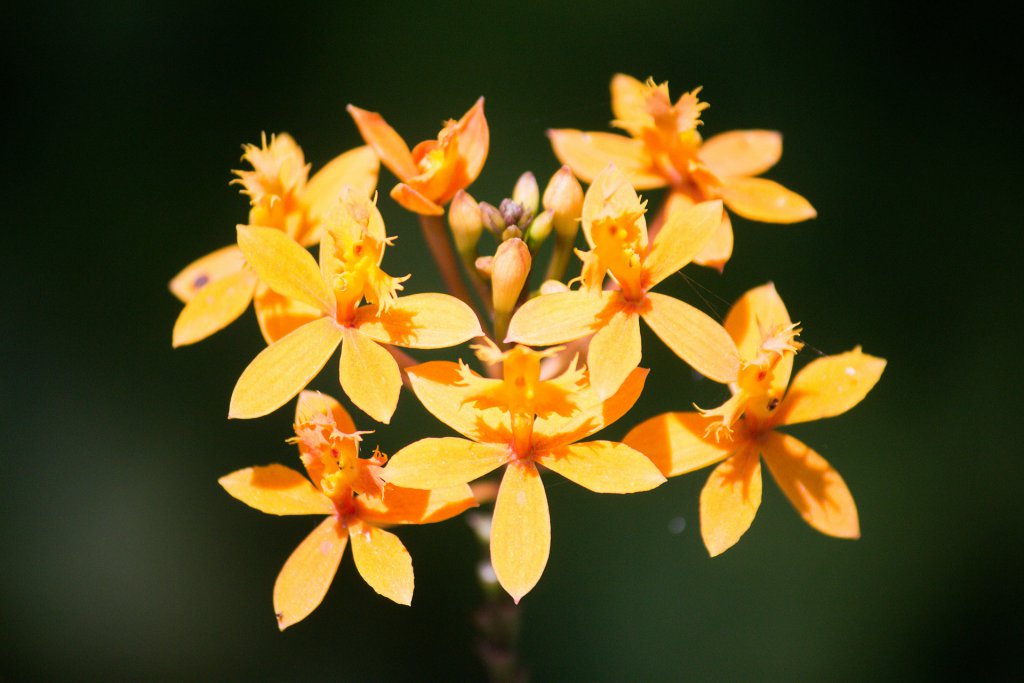
Most species like to be watered regularly and abundantly, especially during the growth phase. You should, however, avoid overwatering, as this will damage the roots.
During winter and the flowering phase, you should allow the soil to dry slightly before re-watering. After watering abundantly, allow the water to drain from the bottom of the pot, to prevent minerals build-ups in the potting mix.
In terms of water quality, most species are not fussy and can tolerate tap water. The species that grow in the higher elevations, however, prefer rainwater or distilled water, as they are adopted to the pure rainfalls in the mountains.
Some species, like the reed-stem Epidendrum, responds to the water reduction by blooming. This can, therefore, be a good trick if you have a reed-stem Epidendrum, which looks healthy but is not blooming.
If you’d like to learn more about watering, check out our guide here.
Potting Mix & Pot
The pot and medium you need will depend on the type of orchid and how it grows in its native environment. The epiphytic plants can be mounted or potted in relatively small pots, while the terrestrial species can be planted on the ground.
The epiphytic Epidendrum species grow well in a potting mix that has good drainage, such as a mix of bark, tree fern, coconut husks, and sphagnum moss. If the sphagnum moss makes up a fair bit of the potting mix, adding charcoal is beneficial, as this will help to remove stagnant water.
In general, these plants will prefer a coarse mixture with plenty of air spaces. Be mindful that if you are using a hanging basket with many charcoal pieces, this can be quite drying, and you should ensure that the plant is moist. Similarly, an Epidendrum planted in a clay pot in comparison to a plastic pot, requires more watering.
The terrestrial species grow well on low nutrient media such as sandy loam soil. Species like Epidendrum Radicans (the reed-stem Epidendrum) are very tolerant of soil conditions, and they can be used to create beautiful raised flowerbeds. Be careful, however, not to combine different species in a flowerbed as these will start to complete with each other. This leads to the detriment of the weaker plants.
Repotting
Repotting Epidendrum orchids is not recommended unless it is visibly necessary. If you see some root growing on the surface of the potting mix, this is not necessarily a sign that repotting is needed. This is actually a sign that your Epidendrum orchid is doing well.
If you need to refresh the potting mix, repot the orchid once every three years, after a blooming session. The new pot size should be just enough to fit the roots. After repotting, put the plant back to the same place.
Some growers report that the Epidendrum orchids are very fussy once they are used to particular conditions. A sudden change of pot, altogether with a change of place, can be a dramatic change for your plant, and it may lead to poor health.
Blooms

The good news is that Epidendrum orchids are quite generous with flowers. They can bloom several times during the year, and the flowers are relatively long-lasting.
Epidendrum orchids are very varied in flower size and appearance. They are known for producing vibrant color flowers. The most common colors are orange, yellow, red, and hot pink. Depending on the species, the flowers may be plain or spotted.
They mostly grow in tufts, and the flowers are usually small to medium in size. Most flowers have a three-lobed lip at the bottom of the flower.
Many species have fragrant flowers, and some of them, like the Epidendrum Difforme, have heavier smell during the night.
Fertilizer
Epidendrum orchids enjoy fertilizers, regardless of their reputation as little survivors of harsh conditions. When fertilized with a well-balanced and slow-release fertilizer, these orchids will respond very quickly by creating greener leaves, stronger roots, and more flower spikes.
Any standard orchid fertilizer works well with Epidendrum orchids if used following the manufacturer’s instructions in terms of dilution and frequency. Be mindful to check the specific species that you have. The Epidendrums that grow in lower lights and northern climates prefer fertilizers that are not too rich in nitrogen.
Care Summary
Here’s a brief summary of what we just learned:
| Light | Bright light throughout the year |
| Temperature | Intermediate to warm but varies significantly by species Not lower than 50F |
| Humidity | 50 to 80 percent |
| Watering | Frequent watering during warmer months Allow mix to dry between watering during winter |
| Potting Mix | Mix of bark, coconut husks, moss, and charcoal for epiphytic species Terrestrial species prefer low-nutrient media |
| Pot | Epiphytic species can be mounted or potted in small pots Terrestrial species can be planted on the ground |
| Repotting | Every three years, if necessary Do not move the orchid after repotting |
| Blooms | Several times a year, long-lasting flowers |
| Fertilizer | Well-balanced, slow-release fertilizer |
Frequently Asked Questions
Here are some common questions we get about Epidendrums:
Are Reed-stem and Crucifix Epidendrums Easy to Grow?
Yes, Epidendrum Radicans, also known as the Reed-stem Epidendrum, is an easy plant to grow. They can live in almost any environment, mounted, potted, or outdoors. They are also tolerant of hard water. Therefore you don’t need to use rainfall or distilled water.
The most common problem you can face while growing reed-stem Epidendrums is susceptibility to fungus. Little round brown spotting in the leaves of your plant can be caused by fungus. You can use a plant-specific anti-fungal spray if this is the case. However, often this spot-causing fungus does not affect the overall growth and health of the reed-stem Epidendrums.
Epidendrum Ibaguense, also known as Crucifix orchid, has a distinctive three-lobed lip that resembles a cross, hence the name. The care guide for crucifix orchids is similar to that of the Epidendrum Radicans.
What are Some Hybrids or Special Epidendrum Species I Can Grow?
The Epidendrum genus is closely related to the Cattleya genus, and many hybrids can be produced by a combination of these two genera, as well as between different species of Epidendrums. Some natural hybrids are actually names as species, such as Epidendrum Doroteae or Epidendrum Purpureum.
Epidendrum Ilense is a hard-to-find orchid species. The incredible looks of its flowers, characterized by a fringed lip, are worth the search. If you ever see this plant for sale, you should not hesitate to buy it. These plants are very rare, and orchid enthusiasts are always on the hunt for this species.
If you get your hands on Epidendrum Ilense, you can then produce its most well-known hybrid, the Epidendrum ‘Plastic doll’. This is a primary hybrid between Epidendrum Pseudepidendrum and Epidendrum Ilense. This orchid is famous for its ultra-shiny and glossy flowers, almost like plastic, hence the name.
Thanks for reading, we hope you found this article useful! Did we miss anything? Let us know in the comments below.

